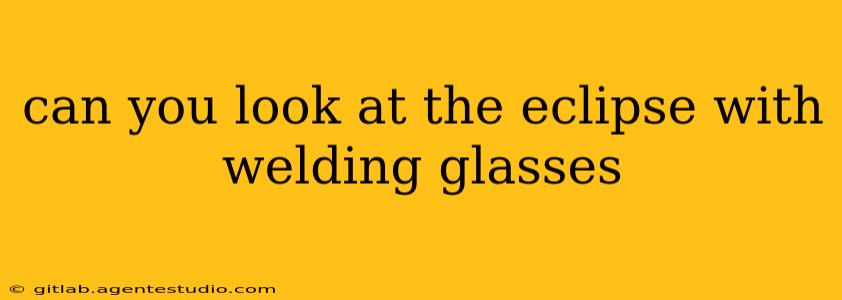Can You Look at the Eclipse With Welding Glasses? A Comprehensive Guide to Safe Solar Viewing
Watching a solar eclipse is a breathtaking experience, but directly looking at the sun, even during an eclipse, is incredibly dangerous and can cause permanent eye damage. This is why using proper eye protection is crucial. So, can you look at the eclipse with welding glasses? The answer is: it depends.
While welding glasses offer significantly better protection than regular sunglasses, not all welding glasses are created equal. The safety of using them to view a solar eclipse hinges entirely on the shade number of the filter.
Understanding Shade Numbers and Solar Eclipse Viewing
Welding glasses are rated using a shade number system. This number indicates the darkness of the filter and, therefore, the amount of light it blocks. A higher shade number means more protection. For safe solar viewing, you need a shade number 12 or higher. Anything less provides insufficient protection and still risks significant eye damage.
Here's the critical point: Many welding glasses sold in hardware stores are shade numbers 10 or lower, making them unsafe for viewing a solar eclipse. Using these glasses could still result in serious eye injury.
Safer Alternatives for Solar Eclipse Viewing
While some high-shade welding glasses are suitable, there are safer and more readily available options for viewing a solar eclipse:
-
ISO 12312-2 Certified Solar Viewing Glasses: These glasses are specifically designed for safe solar observation and are readily available from reputable astronomy retailers and science museums before an eclipse. Look for this certification to ensure they meet international safety standards.
-
Solar Filters for Telescopes and Binoculars: If you plan to use binoculars or a telescope to view the eclipse, you absolutely must use a specialized solar filter designed for this purpose. Improperly using these instruments without a proper solar filter can instantly cause blindness.
-
Indirect Viewing Methods: Pinhole projection is a safe and effective way to view a solar eclipse indirectly. This method involves projecting the sun's image onto a surface, allowing you to observe the eclipse without looking directly at the sun.
Why Risk It? The Dangers of Improper Eye Protection
The sun emits intense ultraviolet (UV) and infrared (IR) radiation, even during a partial eclipse. These invisible rays can damage the retina, the light-sensitive tissue at the back of your eye. This damage can lead to:
-
Solar Retinopathy: This condition can cause blurry vision, distorted vision, and even permanent vision loss. The damage is often not immediately apparent and may not become noticeable until hours or even days after viewing the sun without proper protection.
-
Photokeratitis: Also known as "welder's flash," this is a painful condition that causes inflammation of the cornea.
Conclusion: Prioritize Safety Above All Else
While some welding glasses might seem like a viable option, the risk of permanent eye damage from using an insufficient shade number is far too great. Prioritize safety and obtain proper ISO 12312-2 certified solar viewing glasses, or utilize a safe indirect viewing method for a truly memorable and safe eclipse viewing experience. Your eyesight is priceless. Don't gamble with it.

